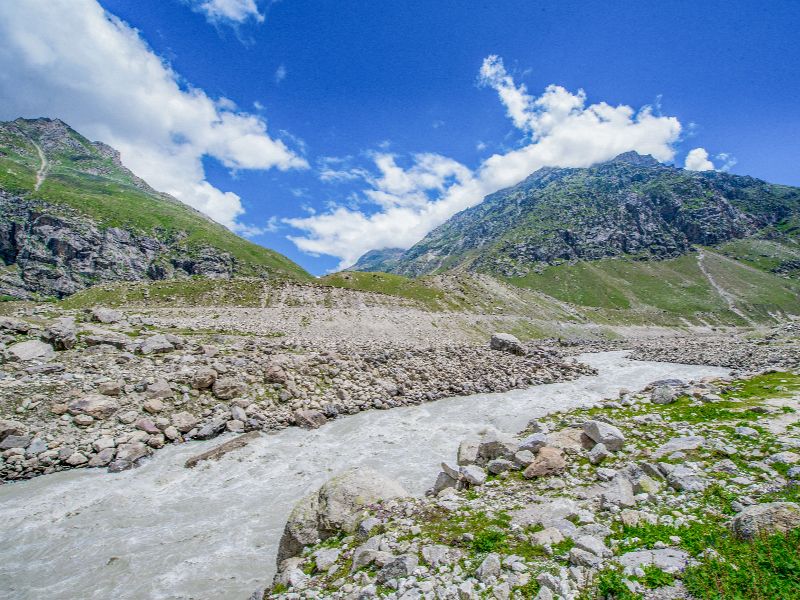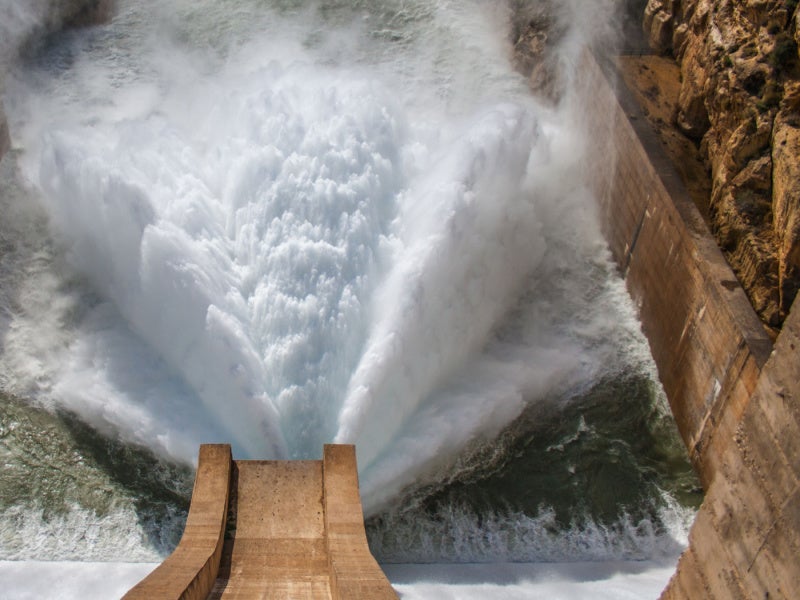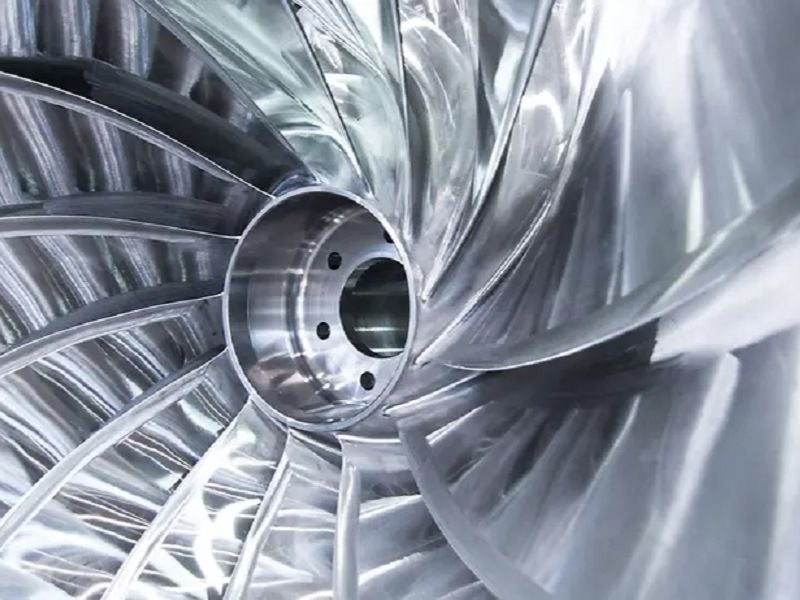The 624MW Kiru hydroelectric project is being developed as a run-of-river scheme in the Kishtwar district of Jammu and Kashmir, a union territory in India. The project is being developed by the Chenab Valley Power Projects (CVPPPL) joint venture (JV) between National Hydroelectric Power (NHPC, 51%) and Jammu & Kashmir State Power Development (JKSPDC, 49%).
The Ministry of Environment Forests and Climate Change (MoEF&CC) awarded environmental clearance for the hydroelectric project in 2016 while the foundation stone was laid in February 2019.
The project is being constructed at an estimated cost of Rs42.88bn ($609.71m) and is expected to start commercial operations in July 2025.
The Cabinet Committee on Economic Affairs (CCEA) approved the investment in the project in March 2019.
Location of the Kiru project
The Kiru hydropower project is being built along the Chenab River near the villages of Patharnakki and Kiru, approximately 42km from Kishtwar.
It will be located between Kirthai II hydroelectric project to its upstream and Kwar hydroelectric project to its downstream.
Kiru hydroelectric project infrastructure
The project will include the construction of a 135m-high concrete gravity dam near Kiru.
A 700m-long, 9m-diameter horseshoe shape diversion tunnel with upstream and downstream cofferdams is being created to divert the flow of the river to enable the dam construction.
Flood control structures will include four orifice-type spillways and two crest spillways, which will serve the requirements for flood release and reservoir flushing. Other major components of the project will include an underground powerhouse, four pressure shafts, and four tail race tunnels.
The powerhouse will be located on the left bank of the river near Kiru. The powerhouse cavern will be 182m-long, 23.6m-wide, and 51.2m-high. It will include four Vertical Francis turbines, each with a power generating capacity of 156MW, with a rated head of 117.98m.
A 137m-long, 17m-wide, and 15m-high transformer-cum-draft tube gate cavern will also be created as part of the powerhouse complex.
The four pressure shafts will have an internal diameter of 5.5m and lengths ranging between 316m and 322m. The horseshoe-shaped concrete-lined tail race tunnels will have a diameter of 7m and lengths ranging from 165m to 190m.
Construction details of the Kiru hydroelectric project
Crown-widening work for the transformer cavern was completed as of May 2022. Pilot excavation work for pressure shafts one and four has been completed.
The concrete lift for the diversion tunnel inlet structure has been completed up to elevation level (EL) 1,425m. Stacking of compacted rockfill material for the coffer dams and drilling work for overburden grouting below the upstream coffer dam are in progress.
Riverbed excavation as part of dam excavation, and dam concreting in the riverbed are in progress. Excavation work for power intake has been halted from January 2023 and will remain so for four to five months due to dam concreting works.
Contractors involved
The contracts for civil and hydromechanical works, as well as electromechanical packages for the project, were awarded in February 2020.
The civil works package (lot 1) worth Rs22.4bn ($311m) was awarded to Patel Engineering, a construction company. The contract involves the construction of a diversion tunnel, concrete dam, pressure shafts, coffer dams, tailrace tunnels, and a powerhouse.
The hydromechanical package (lot 2) was awarded to PES Engineers. It comprises radial gates, stop logs, gantry cranes, a steel liner for pressure shafts, and trash racks.
The Rs5.52bn ($76.73m) electromechanical package (lot 3) was awarded to Andritz Hydro, a global electro-mechanical systems and services provider. The contractual scope includes the design, manufacturing, supply, erection, testing and commissioning of turbines, generators, and auxiliary electrical and mechanical equipment, as well as a 400kV gas-insulated substation (GIS) and 400kV outdoor pothead yard equipment.
Vethesta Constructions was contracted for the development of benches, including protection and drainage work. The contractual scope also included the construction of an internal road for a field hostel and offices near the dam site.
Gemat Soil & Rock Probe Engineers was appointed to perform diamond core drilling works in May 2017.
Mount Geo Technical Services was engaged to perform the marking of the gauge and discharge (G&D) site for the project in 2017. The company also conducted survey work to collect the data required for the civil works package of the project.
R S Envirolink Technologies, in association with the University of Jammu, prepared the environmental impact assessment (EIA) and environmental management plan (EMP) reports for the project in 2015.






